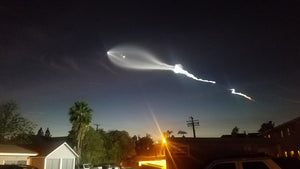
Aquarid Meteor Showers Peak May 6th
|
The Aquarids are from Halley's comet which orbits the sun once every 75 years, due back in Spring 2061. The dust left behind the path of this comet are what give us the Aquarids in May, and the Orionids in October. This meteor shower is known to produce up to 30 meteors per hour at peak in the Northern Hemisphere. The reason they are called Aquarids is the tails of the meteors all lead back to the radiant in the constellation Aquarius, but can be observed anywhere in the night sky. |
|
The peak of this meteor shower will be the evening of May 6th after the moon has set. Dress warmly. Bring a reclining chair, or spread a thick blanket over a flat spot of ground. Lie down and look up somewhat toward the east. Meteors can appear in any part of the sky. Our Skywatcher 15X70 Binoculars can be used for more magnification, or If you would like to take a time-lapse video we would recommend using our Revolution Imager in combination with an All Sky wide angle lens. |







